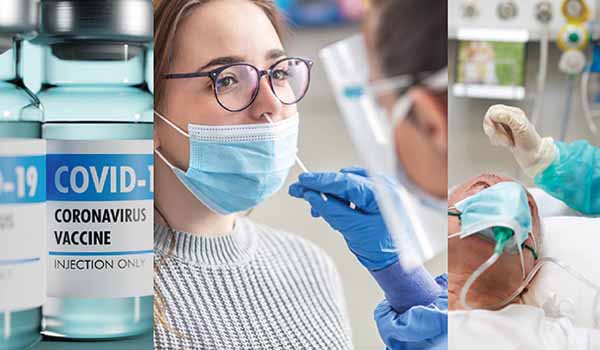
Related Content
What the End of the COVID PHE Means for Medicaid Coverage
What the End of the COVID PHE Means for Telehealth
*Editor's note: After nearly three years and 11 extensions, the Biden administration on Jan. 30 announced the COVID-19 public health emergency would end May 11.
The COVID-19 crisis spurred an unprecedented combination of public health initiatives and funding. Much of it was made possible by the public health emergency (PHE) declared by the U.S. Department of Health and Human Services (HHS) in January 2020.
So, the expiration of the PHE naturally raises questions about what will happen to initiatives – such as vaccination – that are crucial to protecting people from COVID-19. Here are some answers to those questions.
The COVID-19 vaccines were issued with emergency use authorizations (EUAs) that allowed vaccine manufacturers to speed up the availability of vaccines. Once the PHE ends, what will become of those EUAs and the ability to administer COVID-19 vaccines?
In fact, it’s not the PHE declaration that permits the Food and Drug Administration (FDA) to issue EUAs. That authority came from separate declarations issued by the U.S. Department of Health and Human Services specific to EUAs that are not dependent on the PHE declaration and can remain in effect after the PHE ends. The HHS secretary must provide advance notice to the public before ending the EUA-related declarations, and that announcement will kick off a lengthy transition period. “FDA recognizes that it will take time for manufacturers, health care facilities, providers, patients, and other stakeholders to transition away from EUA products and the policies that support them,” the agency’s website says.
Is the same true for EUAs that involve COVID-related testing, medical devices, and medications?
Yes. The same EUA declarations cover them as well and are not affected by the end of the PHE. For medical devices, FDA already has a draft transition plan that could be finalized by 2023 (tma.tips/FDA
transition). That plan outlines a 180-day transition time for manufacturers to get back to standard procedures and provides example scenarios showing what they can expect. For instance, the maker of a COVID test kit might have to comply with all regulatory requirements for its kit but would still be able to continue to market and sell it until it wins full FDA approval.
Will the end of the PHE force patients to pay for COVID vaccines, testing, medications, or services they currently receive for free or at low cost?
Some will have to pay, but others won’t, and this will depend on which medical service the patient needs and his or her insurance coverage, according to an August 2022 report from HHS (tma.tips/COVIDCoverageReport). For most people with private insurance or coverage under Medicaid or the Children’s Health Insurance Program, COVID vaccines will remain free because of provisions in the America Rescue Plan Act and the Affordable Care Act. Medicare patients will still have access to the vaccines at no cost. Uninsured children will have free access to the COVID-19 vaccines through the federal Vaccines for Children program. However, uninsured adults may face a limited supply of no-cost vaccines. For treatments and tests, the need to pay will vary based on the patient’s insurance plan – or lack thereof.
Will the end of the PHE and the loss of federal funds affect state public health services tied to COVID-19?
Texas received $16.3 billion in pandemic federal aid through Sept. 19, according to the Texas Department of State Health Services (DSHS). Those funds came from several federal agencies and were used for a variety of urgent needs such as surge staffing for hospitals and public health entities, equipment and supplies, data systems, laboratory funding, testing, and education. Most of that funding has already wound down as the emergency has eased, though some of it will continue to pay for projects through 2024. “That should not affect existing DSHS public health programs nor lead to budget shortfalls,” the agency said in an email interview with Texas Medicine.
What will happen to Texas’ COVID-19 vaccination records stored in ImmTrac2, the state’s vaccine registry, after the end of the PHE?
A separate state emergency declaration issued independently of the federal PHE declarations governs state and many local COVID-related public health responses, including vaccination records. Once the state declaration ends, the COVID-19 vaccine information collected via ImmTrac2, the state registry, will be preserved for five years, according to DSHS. People can ask for their vaccine information to be kept in ImmTrac2 at the time of vaccination or afterward. The vaccine registry will automatically delete the information for anyone who does not make that request. For more information on consent forms, visit tma.tips/ImmTracForms.